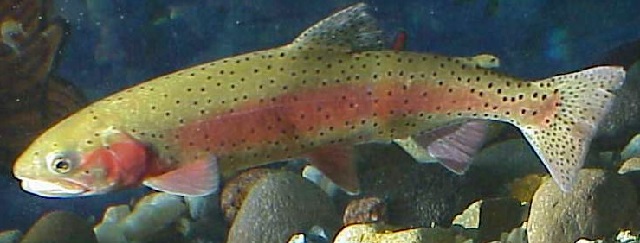Cutthroat Trout


Blade baits are not a very common lure for targeting trout, but most anglers don’t know what they’re missing. Blade baits have excellent action in the current and they can be one of the better ways to target trout in the little deeper water in the rivers. When trout are active, a blade bait retrieved near them can result in good numbers of fish. Cutthroat trout are an aggressive fish and they can be fooled by a blade bait easily when they are feeding. Blade baits will also appeal to bigger fish too because most of the bigger trout will consume other fish as their main diet.

Smaller casting spoons can be great for targeting trout in numbers and for some of the bigger trout, a good-sized spoon is a good way to get them to bite. When fishing for cutthroat trout in the rivers and streams, don’t go too big and you’ll catch some fish when the fish are active.

Jigging spoons are an effective technique for targeting trout in deep water. Most anglers use jigging spoons in lakes for trout. In many of the rivers, using jigging spoons is very tough because it’s more of a vertical fishing technique that you would be using from a boat. Cutthroat trout that are found in lakes will definitely eat a jigging spoon and when the fish are deep, this can be a great way to target them.

Trolling is a popular technique and spoons are some of the best lures to troll when targeting trout. On lakes, anglers will troll spoons to target cutthroat trout. Getting these spoons down to the right depth is key, so depending on the depths you are fishing, you may need a variety of trolling tackle to help make your fishing outing a lot more successful. As far as speed goes, you can usually see the speed that works best for the spoons you’re using by trolling the spoon right by the side of the boat. Some spoons look better trolled fast, some slow. Make sure you adjust accordingly to the depth and the lure you’re trolling with.

Crankbaits work well for trout. In rivers and streams, you may have to downsize quite a bit and use the crankbaits that don’t dive down too deep. In deeper lakes, some of the bigger deep-diving crankbaits are the key to catching a lot of those quality-sized fish. When fishing for cutthroat trout, don’t go too big and fish them fairly slowly in the rivers and streams and you should catch some fish. In lakes, you may want to try casting and trolling. Both methods work well.

Jerkbaits can be very effective for targeting a variety of trout. Most anglers report better success with the smaller hard baits, but the soft plastics will take fish too. For cutthroat trout, try using those smaller jerkbaits and fish them with a twitch, twitch, pause technique and you should be able to catch some fish. Jerkbaits do take some of the bigger trout also, so don’t be surprised if you get bit by a quality fish. You may have to use a little heavier line too if you are targeting better fish.

Inline spinners are some of the best lures for catching trout and cutthroat trout will eat these lures too. Cast them out and wind them in with a steady retrieve and you should be able to catch plenty of trout in rivers, streams and lakes.

Underspins can be awesome for trout fishing when rigged with live baits or soft plastics. They may not be super popular among most trout anglers, but this rig will definitely get you some bites. Rig small swimbaits, small curly tail grubs, finesse worms or live worms and wind them in slowly. You’ll catch some cutthroat trout this way.











































